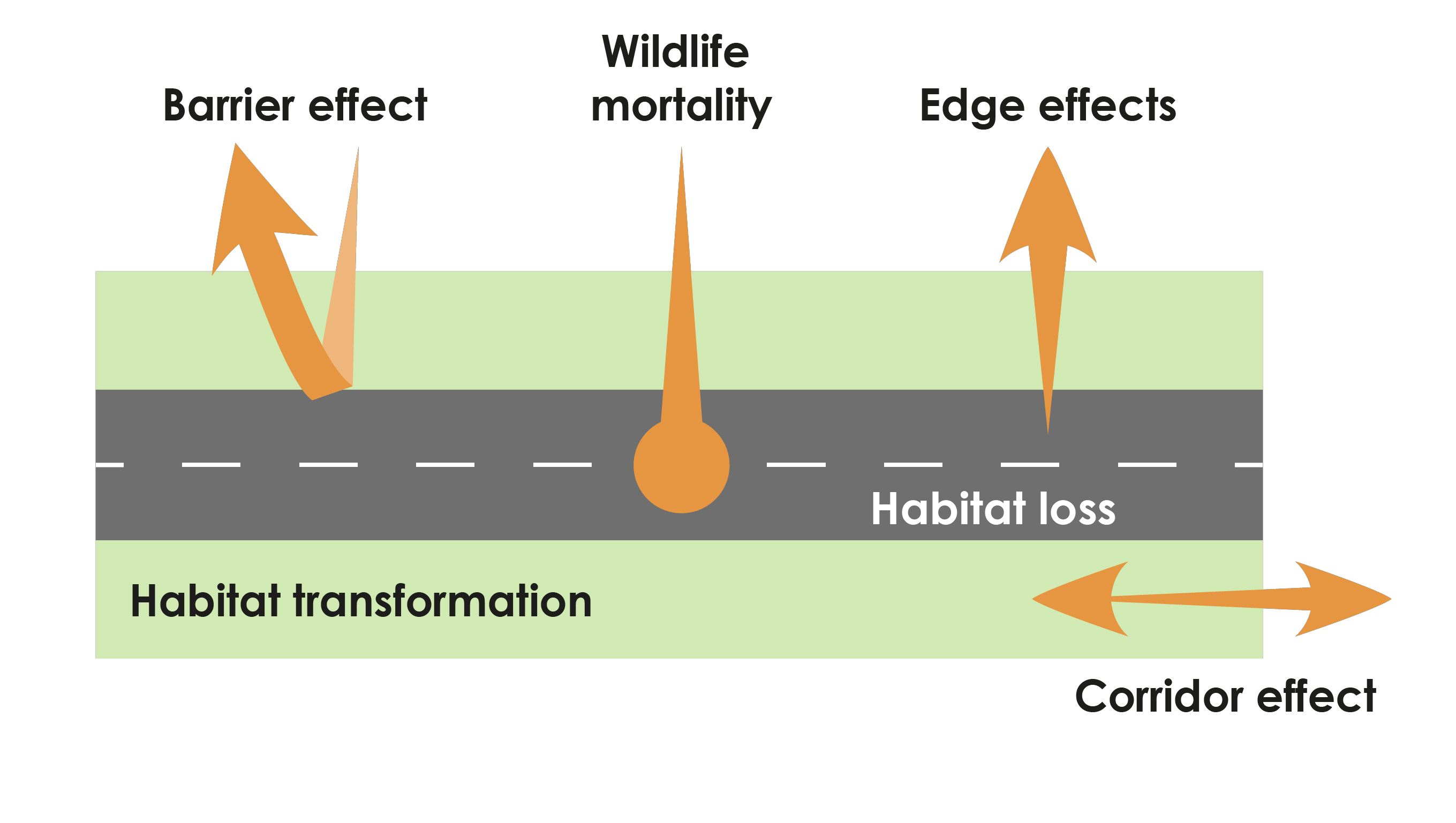Primary ecological effects are produced by the physical presence of infrastructure in the landscape, their structural design, maintenance, and use (Figure 1.3.1). Primary effects are strongly interlinked with each other and must hence be addressed and mitigated in conjunction. Five groups of primary effects can be distinguished:
- Direct loss of habitat (physical imprint and occupation of space).
- Mortality in wildlife (due to e.g., traffic or infrastructure design).
- Barrier effects on wildlife mobility and ecosystem processes across the landscape.
- Edge effects on adjacent habitats (pollution and disturbance, indirect loss of habitat, IAS).
- Corridor effects and transformation of habitat linked to infrastructure.
The combination of these primary effects lead to a secondary effect known as ‘landscape fragmentation’ (see Section 1.4.1 – Landscape fragmentation).
For example, a wildlife population near transport infrastructure may face multiple threats, such as noise pollution that affects reproduction, traffic that causes mortality, and barrier effect that reduces gene flow. To ensure the population’s survival, more than one of these threats may need to be addressed. However, mitigation measures to reduce mortality or noise disturbance, such as fences or noise screens, may worsen the barrier effect and isolate the population further. Therefore, the most effective mitigation approach should consider the complex interactions of these primary effects and aim to increase the population size and connectivity, e.g., by expanding or linking habitats in the landscape.
